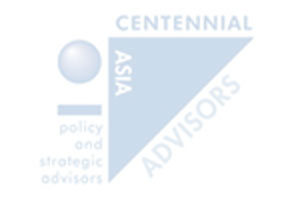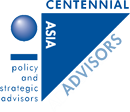Asian Insights
A summary of “Asian Insights” weekly update is published here. The full version is available through paid subscription. Please click here to register your interest. Our executive will get in touch with you.

Highlights from the CAA Weekly Table:
Asian political risks:
- Near term political risks in Thailand have abated as protests wilt under government pressure but the unresolved divisions in society will keep political tensions high.
- Similarly, Malaysia’s Prime Minister Muhyiddin has been fortunate in his choice of opponents who are divided and losing support. But a fragmented political system carries longer term risks for stability.
Asian economies:
- Indonesia’s current account could worsen later in the year. Bank Indonesia will therefore avoid further rate cuts, leaving macro-prudential policies as a preferred policy option.
- In India, the spate of demonstrations by banking sector employees will not force a re-think in the government’s decision to privatise state banks.
- The Philippines is facing more risks to growth. In Singapore, recent data strengthen our view that the central bank will only normalise monetary policy in April 2022.
What do worsening US-China relations mean for Asia?
- The meeting of the foreign ministers of China and the US highlighted the new chemistry in their relationship, one that is more ill-tempered, with less willingness to compromise.
- However, the real action took place before and after that meeting. The US has been busy rebuilding its alliance with Japan and South Korea and successfully elevating its strategic relationship with India to its strongest ever level. The US has also been penalizing China with sanctions. China, in turn, is determined to show that it will not be intimidated.
- The resulting higher risk in the region will force the smaller countries to divert scarce resources into higher defence spending. There is now a stronger case for ASEAN regional integration. With Indonesia showing more leadership in regional matters of late, there is hope that integration could be more successful. Finally, Singapore could gain as political trends weaken Hong Kong’s position as a global heart of commerce and finance.
Forthcoming technology inflection to extend the upturn in the global tech cycle
- The current tight supply-demand dynamic in semiconductors and related areas could persist for some time, underpinned by important transformative trends such as the digital transformation of cars, proliferation of high-performance computing (HPC) applications, and the shift of enterprise workloads to public clouds, all of which have been boosted by the pandemic. We foresee an inflection point for technology that will drive greater demand for chips, extending the upturn and reducing the chip cycle’s inherent cyclicality.
- Lead indicators for the global tech cycle continue to trend up, presaging further gains through 2021. The composite inventory-to-sales (I-S) ratio among chip producers in Korea, Taiwan and the US, a gauge of the supply-demand balance in the global tech sector, fell to a 17-year low in January. Taiwan export orders for semiconductors and information & communications technology (ICT) products notched high double-digit growth rates in January, as did Korea’s early chip exports print.

Highlights from the CAA Weekly Table:
Asian political risks:
- Little should be expected from this Thursday’s first high-level talks between the US and China since President Biden took over. Note how last week’s summit meeting of the US-led Quad edges it towards becoming an anti-China front. At best, a road map for more talks might be laid out, one that might eventually produce a new equilibrium in their relationship.
- China’s imposition of a new electoral law in Hong Kong strengthens its grip on the city. But there is a silver lining in that it is now more likely that necessary social and economic reforms in Hong Kong might actually get done.
Asian economies:
- China: We see modest upside risks to our growth forecasts off the back of a better export performance in coming months and a reduced likelihood that fixed asset investment might tail off as quickly as we had earlier anticipated. Monetary policy will remain accommodative.
- Our nowcast estimates for GDP in Indonesia and the Philippines show their economic recoveries faltering while India’s upturn could also lose momentum. However, India and Indonesia show further commitment to supply side reforms.
Oil price rally begins to hurt Asia
- OPEC’s extension of output cuts should allow oil prices to rise above USD70. This will start to hurt Asian economies through 3 channels – growth, inflation and external accounts:
- Economic growth in Singapore and Hong Kong are most at risk.
- India is where an inflationary impact might do more damage.
- Indonesia, India and the Philippines could suffer wider external imbalances, more so when economic activity revives and the infrastructural agenda is back on track.
Premature to call another commodity super-cycle
- The release of pent-up demand in 2H21 will support commodity prices as soaring demand meets capacity constraints. However, it is premature to call for another broad-based commodity super-cycle since we are not likely to see a replication of the massive surge in demand that China exerted in the early 2000s.
- A surge in infrastructure spending led by President Biden’s plans for the US could produce a more bullish picture.
|
Baseline View: Winners and Losers from Rising Commodity Prices |
||
|
Indonesia |
Bullish commodity: CPO, Rubber, Nickel, Copper, Coffee |
2.6% of GDP |
|
Balanced commodity: Coal |
1.6% of GDP |
|
|
Malaysia |
Bullish commodity: CPO, Rubber |
2.9% of GDP |
|
Thailand |
Bullish commodity: Rubber, Rice |
1.4% of GDP |
|
Vietnam |
Bullish commodity: Rubber, Rice, Coffee |
3.0% of GDP |
|
The Philippines |
Bullish commodity: Copper, Nickel |
0.4% of GDP |
|
India |
Bullish commodities: Rice |
0.2% of GDP |
